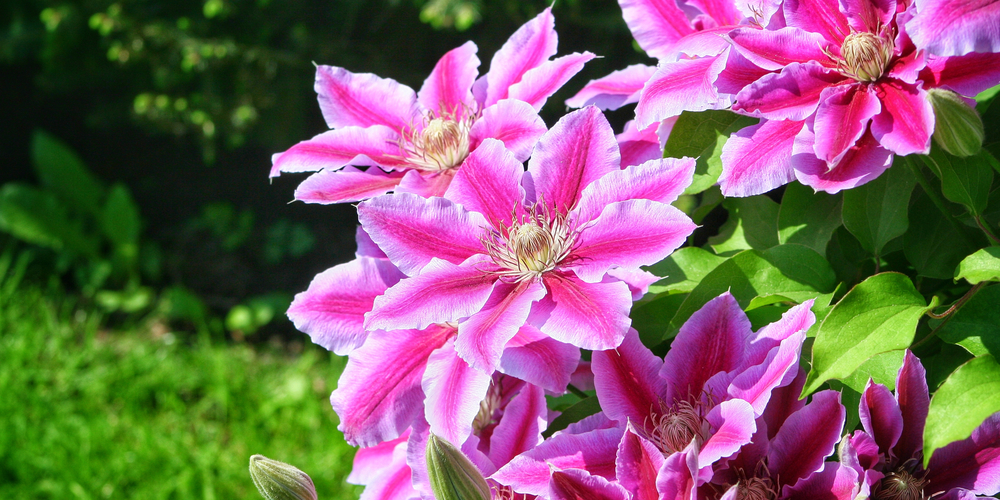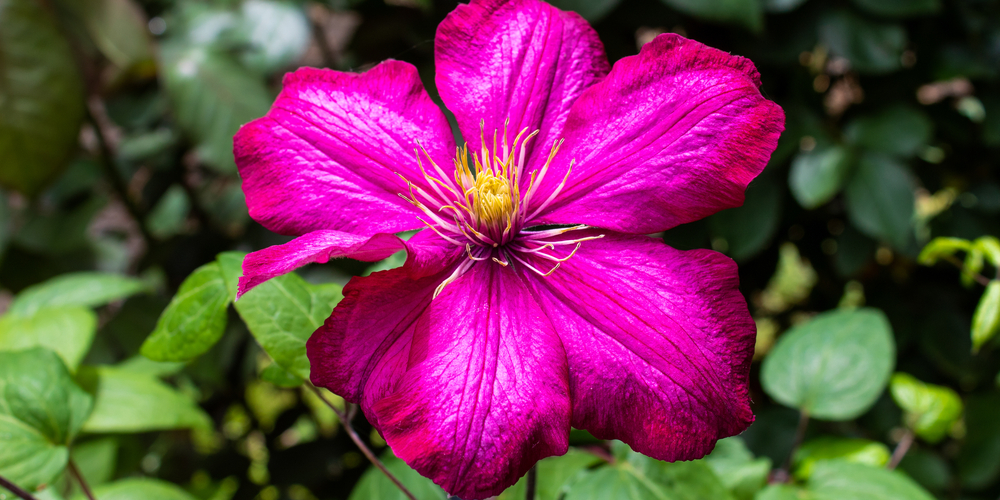Clematis are beautiful wall climbing plants that come in many shapes, sizes, and species. Yes, not all clematis are made equal, and some will have slightly different requirements, so much so that clematis can grow in USDA hardiness zones 4 through 9, which is a pretty big range. Where your specific clematis grows best will depend on the type of clematis it is – so that’s something you’ll need to research before you buy. One question that’s relevant to all clematis though is ‘Can clematis survive frost?’, and today we’re going to find out the answer!
Quick Answer
Well, unfortunately, no, not naturally. A clematis is a plant that doesn’t deal with frosts particularly well, and a harsh frost can easily kill off your plant.
So, Can Clematis Survive Frost…?
Well, unfortunately, no, not naturally. A clematis is a plant that doesn’t deal with frosts particularly well, and a harsh frost can easily kill off the clematis you worked so hard to cultivate and guide up the wall over spring and summer. Now, some clematis might have a better cold/frost hardiness rating than others, so if you’re in a colder climate and still want to enjoy these beautiful plants, then it’s possible to do so.
You might still need to take some extra precautions to keep your clematis healthy and strong when the cold sets in, though, and below we’ll take a closer look at the things you can do to protect them from frost. The following section would be a good read for those in warmer climates too, since snap frosts and freak chills aren’t all that uncommon, and being prepared might just save your clematis when they happen!
What Are The Best Ways To Protect Clematis During A Frost?
So, if you’ve found a clematis plant with a good cold/frost hardiness rating naturally, then you’re already on to a winning combination. However, they will still need some additional support during a frost. The following steps are great for clematis plants in warmer climates where a surprise frost happens too, so to protect ANY clematis plant during the frost, try these few things:
1. Pick A Good Spot
With a clematis plant, as with any plant, position is key! If you plant your clematis in the right spot, then you’ll be able to protect it best when the frost sets in.
Clematis is obviously a wall climbing plant, and you’ll likely have it up against a wall anyway attached to a trellis to guide its growth. But which wall you choose can make all the difference. A south facing or west facing wall is often best. That’s because these walls receive the most heat during the day from the sun, and they also release heat overnight after the brick wall has been absorbing heat all day.
Placing your trellis against a south or west facing wall is a great, natural way of keeping your clematis warmer.
2. Think About Protection From The Elements
A frosty day gets even colder when the wind and rain pick up, right? Considering your clematis is against a wall anyway, they’re already protected from the elements a little, but try to pick a spot along the wall where there is additional protection. Maybe your neighbor’s property takes the brunt of the wind in a certain location – this would be an ideal place to start your clematis since it won’t deal with icy winds during the winter.
Just think about where the safest space might be to stop it from being too exposed, and plant your clematis there.
3. Cover It Up
It might seem silly, but we wouldn’t stand outside in a frost in nothing but our birthday suits, would we? So why should our clematis? It isn’t designed to deal with a frost well, so we can help it by keeping it warm.
All you’ll need is an old bed sheet, drop cloth, or tarp. Just take it and tie it to the trellis that your clematis is climbing up, being careful to leave a little room between the clematis and the cover – you don’t want to stunt it in any way, you just want to add an additional barrier between it and the cold outside. You can make sure the cover doesn’t blow off by installing some outdoor hooks and stakes by your trellis to keep the cover in place.
This additional protection might just be enough to help your clematis through even the harshest frosts.
4. Consider A Light
An outdoor light or lamp can be a great way of providing some additional warmth to your clematis if you think it’s going to struggle with just the cover technique above. A good outdoor lamp will provide heat during the night and help your clematis stave off the cold. Just make sure the light itself isn’t covered because if they get too hot beneath the bedsheets, etc., then it could cause a fire.
So, a lamp above the covered clematis could work well, so long as you don’t cover the light too.
Can Clematis Survive Frost?: Conclusion
Take these 4 steps, look out for a clematis with a good cold/frost hardiness rating if you’re in a colder climate, and do everything you can to keep it warm, and your clematis might just be able to hold off the frost it wouldn’t typically be able to do without your help! Saving a clematis from the frost – doesn’t that make you feel good?


